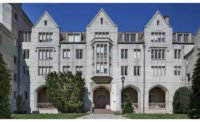Award of Merit, Renovation/Restoration: UC Berkeley's Hearst Greek Theatre








Listed on the National Register of Historic Places, this landmark outdoor theater required a seismically sound renovation and expansion without compromising its historic facade. The $5.26-million project broke ground in November 2011 and was completed in May 2012.
The 1903 John Galen Howard-designed amphitheater included the stage, colonnade and the seating bowl. The 1957 Ernest Born addition added a basement backstage area—whose excavation compromised the theater's seismic integrity—with a large plaza flanked by two stage-level portions.
The amphitheater hosts theatrical performances, campus rituals, concerts and graduation ceremonies. After the expansion, it can accommodate 9,000 people.
The structure was most vulnerable in the colonnade. Engineers and designers agreed that it presented the most significant life-safety risk during a seismic event.
Early modeling examined the 40-ft unreinforced-concrete columns in isolation, but the more cost-effective final plan focused on how the colonnade would behave as a structure in an earthquake. Four new reinforced-concrete columns were added and concealed in the original structure, the existing unreinforced ridge beam was replaced with a reinforced one and new piers were installed in the foundation beneath each new column.
UC Berkeley's Hearst Greek Theatre
Berkeley
Key Players
Owner: UC Berkeley Capital Projects
Contractor: Overaa Construction, Richmond
Lead Design: Cody Anderson Wasney Architects, Palo Alto
Structural Engineer: Tipping Mar, Berkeley
Submitted by Tipping Mar






